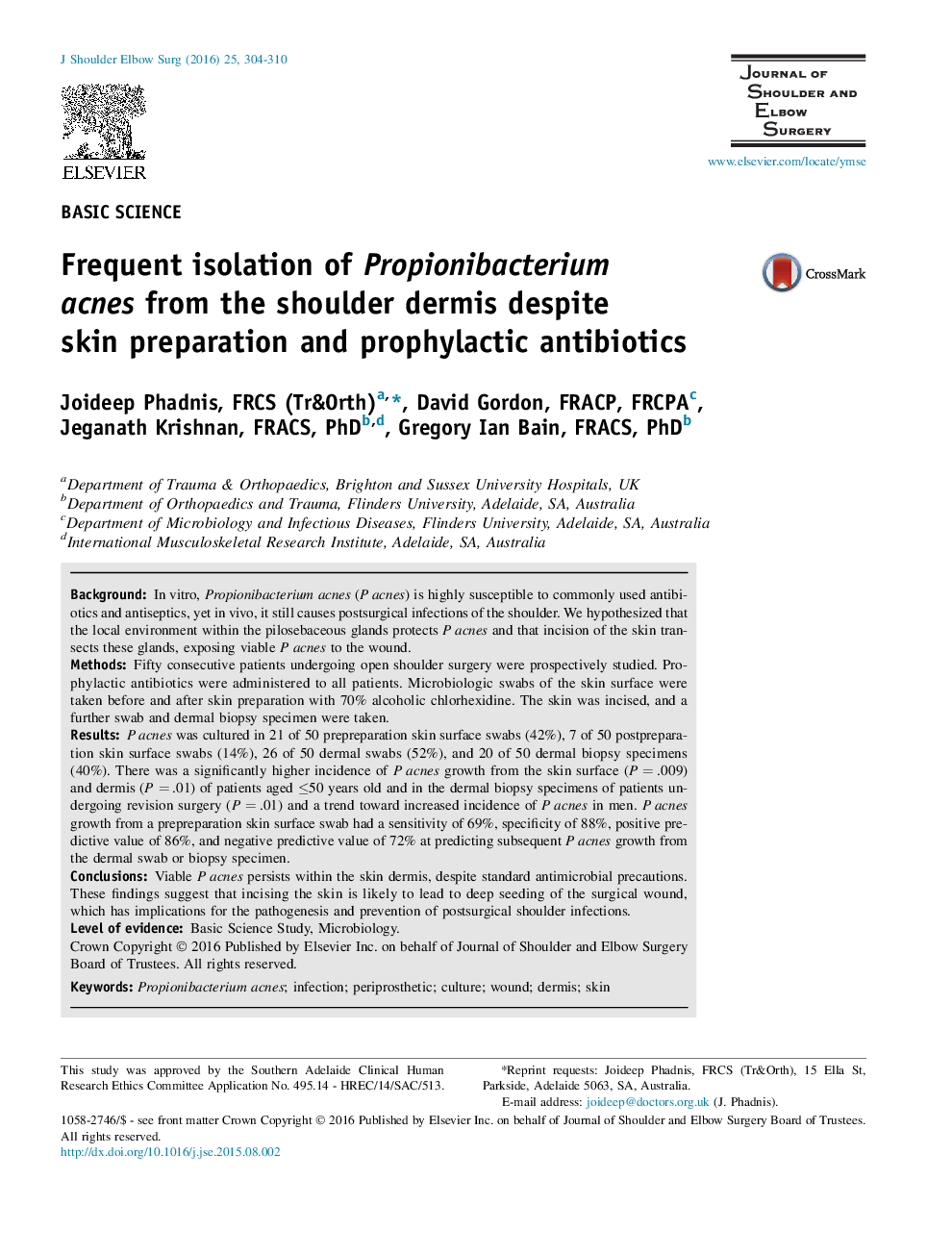| کد مقاله | کد نشریه | سال انتشار | مقاله انگلیسی | نسخه تمام متن |
|---|---|---|---|---|
| 4073240 | 1266976 | 2016 | 7 صفحه PDF | دانلود رایگان |

BackgroundIn vitro, Propionibacterium acnes (P acnes) is highly susceptible to commonly used antibiotics and antiseptics, yet in vivo, it still causes postsurgical infections of the shoulder. We hypothesized that the local environment within the pilosebaceous glands protects P acnes and that incision of the skin transects these glands, exposing viable P acnes to the wound.MethodsFifty consecutive patients undergoing open shoulder surgery were prospectively studied. Prophylactic antibiotics were administered to all patients. Microbiologic swabs of the skin surface were taken before and after skin preparation with 70% alcoholic chlorhexidine. The skin was incised, and a further swab and dermal biopsy specimen were taken.ResultsP acnes was cultured in 21 of 50 prepreparation skin surface swabs (42%), 7 of 50 postpreparation skin surface swabs (14%), 26 of 50 dermal swabs (52%), and 20 of 50 dermal biopsy specimens (40%). There was a significantly higher incidence of P acnes growth from the skin surface (P = .009) and dermis (P = .01) of patients aged ≤50 years old and in the dermal biopsy specimens of patients undergoing revision surgery (P = .01) and a trend toward increased incidence of P acnes in men. P acnes growth from a prepreparation skin surface swab had a sensitivity of 69%, specificity of 88%, positive predictive value of 86%, and negative predictive value of 72% at predicting subsequent P acnes growth from the dermal swab or biopsy specimen.ConclusionsViable P acnes persists within the skin dermis, despite standard antimicrobial precautions. These findings suggest that incising the skin is likely to lead to deep seeding of the surgical wound, which has implications for the pathogenesis and prevention of postsurgical shoulder infections.
Journal: Journal of Shoulder and Elbow Surgery - Volume 25, Issue 2, February 2016, Pages 304–310